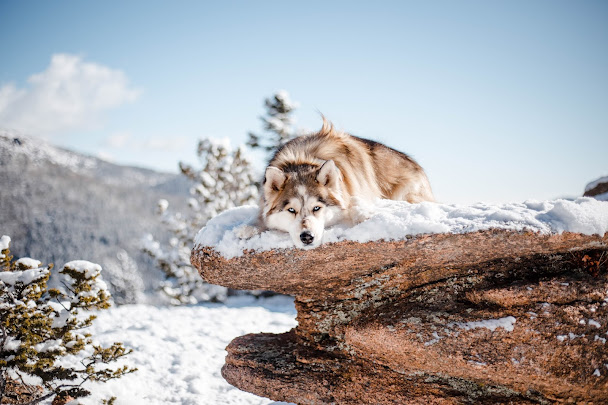Canine Enrichment Activities
CANINE ENRICHMENT ACTIVITIES
There are many different
types of enrichment activities that you can provide for your dogs.
These include:
Sniffing – Sniffing is one
of the most enriching activities you can provide for your dog. It stimulates
their senses and increases feelings of calmness and relaxation. Try taking your
dog on a Sniffing Safari, scattering treats in the garden, doing Nosework or
giving your dog a Snufflemat.
Chewing – Chewing is a
calming and stress reducing activity for dogs. Providing your dog with safe
outlets for their need to chew makes it less likely that they will redirect
their need to chew to your furniture. Providing your dog with an appropriate
chew toy can also keep them busy and entertained for quite some time. Deer
Antlers, Goat Horns, Himalayan Yak Chews and Frozen Kongs® can all provide your
dog with a healthy chewing outlet.
Licking – Licking is also calming and helps reduce stress and anxiety and can keep your dog entertained for quite some time. Frozen Lickimats® are great for this.
Digging – Digging is a
natural instinctive behaviour and allowing dogs to practice this behaviour
safely can provide great enjoyment, is a form of physical exercise that will
tire them out, and satisfies their wild instincts. You can provide your dog
with the opportunity to dig in a safe and appropriate manner by making them a
sandpit or filling a kiddy pool with plastic balls then scattering treats for
them to dig for and find.
Searching – Offering treat
hunts, such as scattering kibble in the garden, hiding their favourite toy and
encouraging your dog to find it, playing hide-and-seek with your dog and
teaching them nosework by training them to find certain scents are all
incredibly enriching activities for your dog, and can satisfy their wild
hunting instincts.
Running – Allowing your dog
to run freely in a safe enclosed space provides them with great physical
exercise and often brings dogs lots of joy, which may be seen with Zoomies.
Many dogs spend most of their day in a house or on lead when on walks, so the
opportunity to run free is very rewarding and enjoyable for dogs.
Chasing – Chasing stimulates a dog’s prey drive, creates engagement and increases excitement, and is a great way to provide physical exercise. Fetch is a great example of a chasing activity, and social dogs also enjoy playing games of chasey with suitable canine friends, or you can play chasey with your dog by running away and encouraging them to chase you, then stop and wait for them to come, then chase them for a few seconds, before stopping and running away from them again.
Problem-solving – Using food puzzles, and other games and activities that challenge your dog mentally and engage their brain and thinking skills helps to tire them out mentally and builds confidence and resilience. Make sure the activities provided are easy enough for your dog to solve, and you can slowly increase the difficulty as they become better at finding the solution. If an activity is much too difficult for them to solve, your dog may become frustrated and give up, and may cause them to lose self-confidence. This is not enriching.
Hunting – Offering your dog
opportunities to hunt for their food safely can satisfy their wild hunting
instincts. This does not mean you allow your dog to kill actual live animals,
rather you stimulate the hunting instincts by placing treats inside a toy or
object that they can shred to find the treasure inside. An example would be
placing kibble or another food inside toilet rolls that are then folded closed,
and hiding them around the garden for your dog to stalk, hunt and shred.
Shredding – Shredding stimulates a dog’s prey drive and can be a great way to relieve stress. Some dogs may enjoy shredding a cardboard box for example. Just be sure to supervise the activity and do not allow your dog to eat the cardboard.
Training – Short fun
training sessions will encourage engagement and help strengthen your
relationship and bond with your dog.
Agility - Athletic dogs often enjoy activities such as obstacle courses, weaving poles, hurdles and tunnels.
Playing – Playing with
toys, other dogs, or their human family members is also a fun and rewarding
activity for dogs which will help them develop good social skills and increase
social bonding.
Providing your dog with Enrichment activities is an important factor in ensuring that their psychological needs are met, in addition to their physical needs. This includes providing them a home and environment which meets their specific needs, and which allows them to safely express their own innate behaviours, and to enjoy fun activities throughout the various stage of their life.
Of course, every dog is
different and will have their own preferences. Different breeds may also have
very different enrichment needs, so what your dog might enjoy may be vastly
different to what another dog would enjoy.
Some dogs are very active
and would benefit from energetic activities such as agility jumps, fetch,
nosework or long walks, whereas other dogs would be much happier snuggling up
to you on the couch while you read them a story, or trying to figure out a
treat puzzle.
You know your dog best, so
start by giving them options that you know they will enjoy, but don't be afraid
to think outside the box, be creative, and offer them new activities and
experiences also.
The most important thing is
to give your dog a choice about what they want to do, and to have some
predictable routines for those activities.
For more ideas on Enrichment Activities to offer your dog, check out my book
Sniff Play Bark – Your Essential Guide to a Happier Dog













Comments
Post a Comment